Last spring we visited some of the Hidden Historical Gems of Wilmington and its island beaches. With fall and winter around the corner, we’re now exploring some indoor “hidden gems” at year-round attractions that beckon during crisper weather and rainy days.
The Battleship NORTH CAROLINA
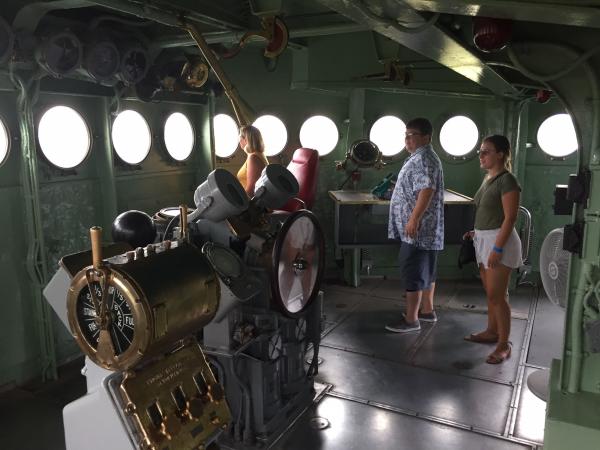
Bridge of the Battleship NORTH CAROLINA
It’s hard to miss this World War II landmark. Kids love climbing into the big gun turrets or sitting in the captain’s chair on the bridge. And they might catch a glimpse of Charlie the Alligator and his family from the new SECU Memorial Walkway. As you enter the Visitor Center, check out the Legacy Gallery, with artifacts from the various warships named “North Carolina.” The cold storage compartments have recently been added to the already comprehensive ship tour, showing how the cooks stored meat, fruits and veggies during the long voyages.
Wilmington Railroad Museum
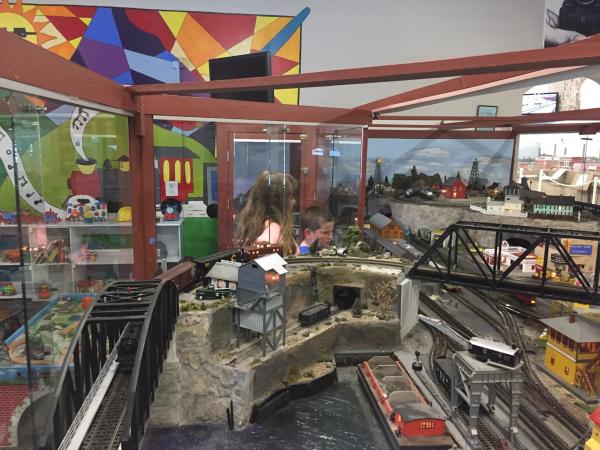
The Children’s Area of the Wilmington Railroad Museum.
Learn about the days when Wilmington was headquarters to the Atlantic Coast Line Railroad. Displays inside the museum’s historic warehouse show offices, equipment and aspects of the operations of the railroad. Kids spend hours playing in Children’s Area and in the Model Hall, with its elaborate model railroad layouts.
Three Historic House Museums
A “triple ticket” allows discounted admission to the Bellamy Mansion Museum, the Burgwin-Wright House and the Latimer House, each showcasing a unique period of history.
John Burgwin built his house in 1770-71 atop the former jail. The arches off a rear courtyard are the former debtors’ cells. The jailer lived on the premises, but Burgwin converted the small house into a kitchen that is still stocked with Colonial-era cooking implements. Candlelight tours are offered at 9 p.m. the first Friday of each month.
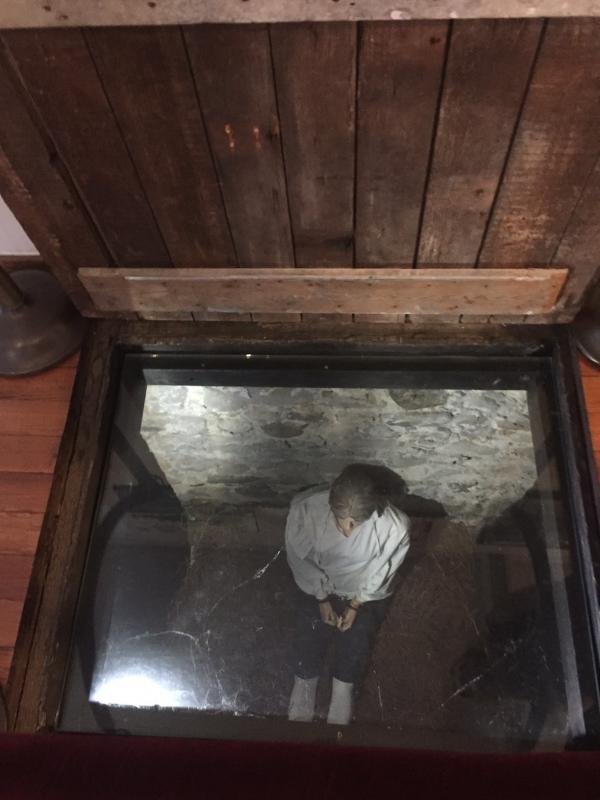
A “window” in the ground floor of the Burgwin-Wright House shows
a hapless prisoner in his subterranean cell.
Like the other two houses, the Bellamy Mansion Museum offers a look at how the upper crust lived, particularly during the Civil War period and the years afterward. In recent years, the museum has also focused on the lives of the slaves who worked in the 1859-60 house. William B. Gould was a slave and a skilled craftsman who worked on the plaster moldings, and his carved initials can be seen inside the mansion.
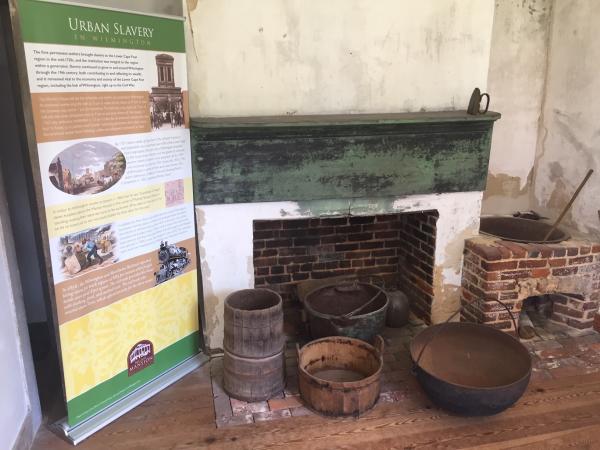
Fully restored slave quarters at the Bellamy Mansion.
The Latimer House, built in 1852, actually predates the Bellamy Mansion, but it tells the story of its Victorian era family, with a sizable collection of art and artifacts family members collected during the late 1800s. In 1962 the Latimer family donated the house and its original furnishings to the Lower Cape Fear Historical Society, which offers daily tours and special events.
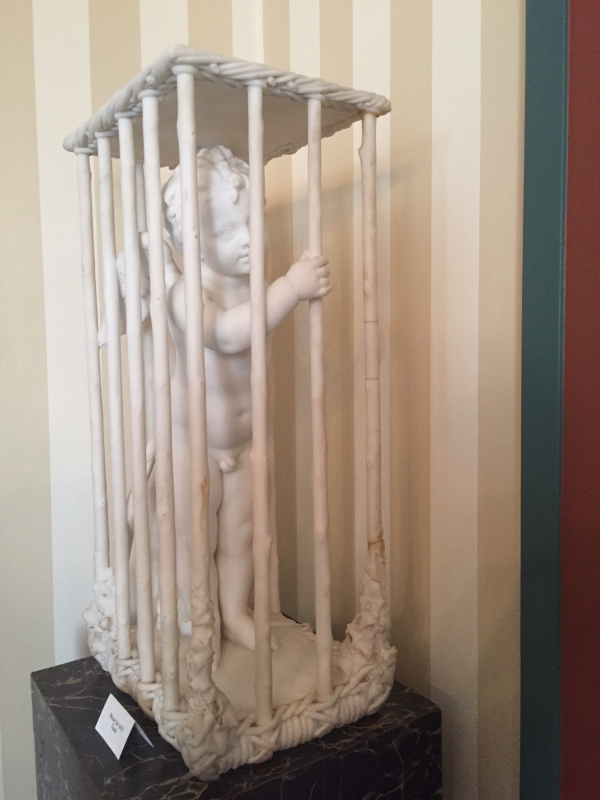
A marble sculpture purchased by William Latimer after a trip Europe in the 1880s.
Thalian Hall Center for Performing Arts
Historic Thalian Hall’s theater was built in 1858 and is one of the nation’s most beautiful and heavily used historic theaters. Guided tours are offered at 2 p.m. every Monday. Check out the restored curtain painted by Philadelphia artist Russell Smith on canvas. Depicting an island temple on the Aegean Sea, it was first used on Thalian Hall’s opening night Oct. 12, 1858.

Thalian Hall displays its original 1858 curtain at the theatre entrance.
Cape Fear Museum of History & Science
The Cape Fear Museum, a Smithsonian Affiliate, showcases science and the area’s history. As we observe the 50th anniversary of the Apollo 11 moon landing, kids will love the Space Place permanent exhibit, which puts them inside a spacecraft. Another family favorite is the Dinosaur Discovery exhibit, up until February 2020. Speaking of dinosaurs, visitors are greeted by the skeleton of a giant ground sloth, a replica of the fossil found right here in Wilmington. One exhibit highlights the career of Wilmington favorite son Michael Jordan.
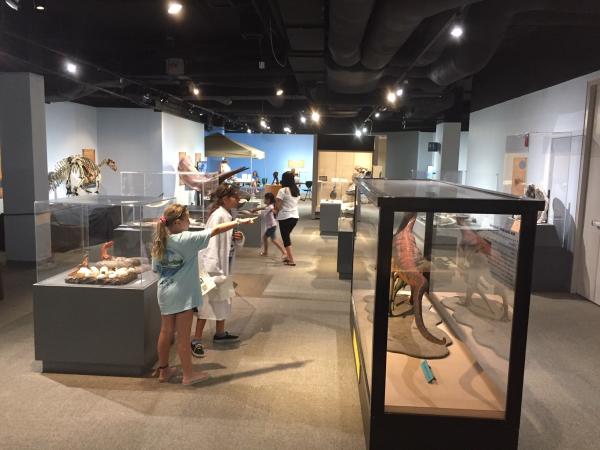
Dinosaur Discovery exhibit.
Cameron Art Museum
Current exhibits at the Cameron Art Museum include a display of Modernistic prints from the Louis Belden collection, a jewel for a community-owned museum like the CAM. Kids love the mind-blowing interactive art presented by teamLab’s Beyond the White Cube exhibit. The “sketch aquarium” lets them color a sea creature, scan it and then watch it swim through a wall-sized, computer-generated aquarium. While you’re there, enjoy some culinary art at the Cam Café (lunch daily; dinner with live music on Thursdays). How many museums offer a restaurant that serves locally sourced, hand-crafted food?

The “sketch aquarium” exhibit at the CAM lets kids guide images through the water.
Wrightsville Beach Museum of History
The Wrightsville Beach Museum is housed in an old-timey beach cottage chock-full of artifacts from a bygone era, from the ultimate retro kitchen to a clever beachfront model including the fabulous waterfront pavilion Lumina. The museum will open the adjacent 1924 Ewing-Bordeaux Cottage in the spring of 2020. Its Watermen Room will highlight water-related activities, from boat-building to fishing to waterskiing and sailing. The Chris Stone Exploration Room will offer hands-on activities for kids and adults.
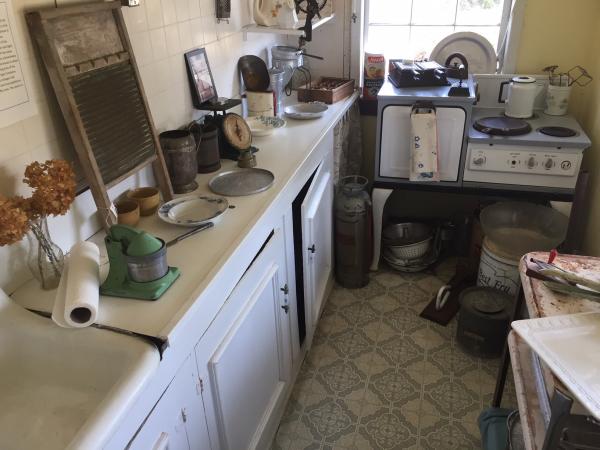
A typical beach cottage kitchen during the first half of the 20th century.
The North Carolina Aquarium at Fort Fisher
The N.C. Aquarium at Fort Fisher is a stunning way to learn about the ecology the Cape Fear area, featuring both freshwater and offshore habitats. From Maverick the rescued bald eagle and Luna the Albino alligator to the 243,000-gallon Cape Fear Shoals underwater exhibit to the touch tank, you’ll be fascinated.
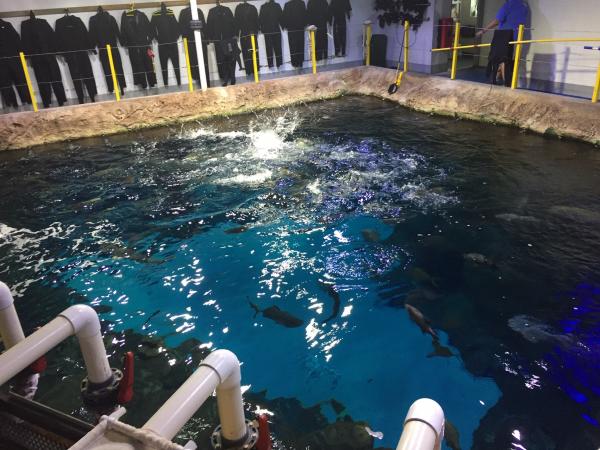
Feeding frenzy atop the Cape Fear Shoals tank.
Fort Fisher State Historic Site
The Fort Fisher State Historic Site was where a huge armada of federal land and sea forces overwhelmed the fort guarding the entrance to the Cape Fear River, hastening the end of the Civil War. The Visitor Center offers a film about the battle, a large lighted display map of troop movements, and a wealth of artifacts about the maritime battle and about Civil War life in Wilmington. Afterward, stroll the grounds to see the earthworks and the Armstrong Cannon, which hurled 150-pound cannonballs at unlucky targets.

A lighted map shows ship and troop movements during the 1865 Battle of Fort Fisher.


